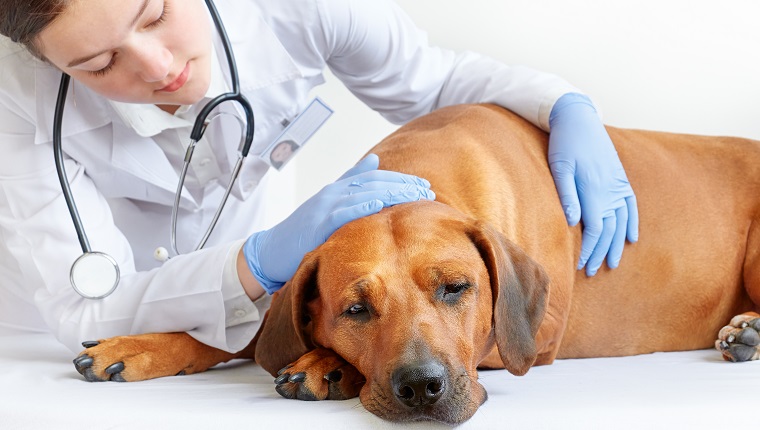Aplastic anemia in dogs is a condition that sets in when the bone marrow fails to properly replenish red blood cells in the body. More specifically, it happens when fat tissues replace the bone marrow, which can result in blood failing to clot effectively and diminished levels of oxygen carried around the body.
The condition can prove fatal if a veterinarian does not treat it in time.
If you see signs that your dog might be developing anemia, then you must consult your veterinarian for a proper diagnosis and course of treatment. Here’s what you should know about the symptoms, causes, and treatments of aplastic anemia in dogs.
Symptoms Of Aplastic Anemia In Dogs
Aplastic anemia in dogs is a condition that can bring on a range of symptoms. Some of the most common symptoms include:
- Frequent infections
- Passing urine with blood in it
- Nosebleeds
- Red and purple spots appearing on the skin
- Feeling and acting generally lethargic
Causes Of Aplastic Anemia In Dogs

There are a number of different common causes of aplastic anemia in dogs. Some of the most common causes include:
- Infections (including canine parvovirus infection)
- Infections caused by ticks (including ehrlichiosis)
- Undergoing radiation therapy
- Anti-inflammatory drugs
- Chemotherapy drugs
Treatments For Aplastic Anemia In Dogs
If you think that your dog is suffering from aplastic anemia, your veterinarian will want to carry out a full physical examination along with ordering blood work. In particular, they’ll monitor the number of red and white blood cells.
Additionally, vets will usually take a bone marrow sample to look for any signs of anemia.
If the vet confirms the diagnosis, treatment normally begins with a stay in hospital. While receiving supportive therapy, dogs may also need a blood transfusion.
Your vet may also prescribe medicine that is specifically designed to help bone marrow function, including cyclosporine. As ever, if your vet prescribes a course of medication, then it is important that you adhere to the correct dosage and frequency.
If your vet suspects an infection has caused the anemia, they may also use antibiotics to help the recovery effort.
Due to the serious nature of this condition, many dogs who suffer from it have to stay in hospital for an extended period. If your vet gives your dog the all clear to head home to continue their recovery, it is vital that you provide a calm and relaxed environment and keep up with regular bone marrow tests.
Have you ever had a dog who suffered from aplastic anemia? How did your vet help your canine recover? Tell us all about it in the comments below.









